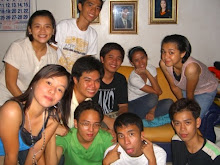
I had an acl injury when I was in gradeschool, I got it during a taaekwondo match, and just recently my favorite volleyball player (Laurence ann latigay) tore hers during a tune-up game, that is why she’s not the guest player of baste this conference of v-league. Bottom line? It’s one thing that an athlete and even fans hate! Although most of the time it’s nobody’s fault, acl is one hell of a nightmare!
The anterior cruciate ligament (ACL) is one of the four major ligaments of the human knee. It is the most commonly injured knee ligament and is commonly damaged by athletes. The ACL is often torn during sudden dislocation, torsion, or hyperextension of the knee. Commonly patients report hearing or feeling a "pop", but pain at the time of ACL rupture can vary from moderate to severe, however, strong painkillers are normally needed. In the hours following ACL rupture, however, most patients notice progressive swelling (usually due to bleeding of the vessels along the torn ACL). This swelling generally is quite painful, but can be minimized by icing the knee. ACL tears typically occur in sports where cutting, twisting, and turning are common.
Treatment for an ACL injury can either be nonsurgical or surgical depending on the extent of the injury. Nonsurgical options may be used if the knee cartilage is undamaged, the knee proves to be stable during typical daily activities, and if the patient has no desire to ever again participate in high-risk activities (activities involving cutting, pivoting, or jumping). If the nonsurgical option is recommended, the doctor may recommend physical therapy, wearing a knee brace, or adapting some typical activities. With the use of these nonsurgical options a patient can expect to be back to normal daily activity within one month. However, most ACL-deficient athletes conclude that their knee continues to feel unstable, again confirming the important role of the ACL in normal knee stability.
Surgical options may be used if the knee gives way during typical daily activities, showing functional instability, or if the patient is unable to refrain from participating in high-risk activities ever again. Reconstructive surgery may also be recommended if there is damage to the meniscus (cartilage). This surgery is completed using arthroscopic techniques. There is also an option for an autograft to be done using a chosen tendon.. Physical therapy must be completed in three phases after the surgery is completed. With the use of the surgical treatment option, rehabilitation included, a patient can expect to be returning to previous and desired levels of activity in six to nine months or longer.
So before any game or training make sure to warm up and do stretching. But since it is unexpected and UNWANTED, just play the game and do it for the love of sport! Remember: Go hard! Or go home!
